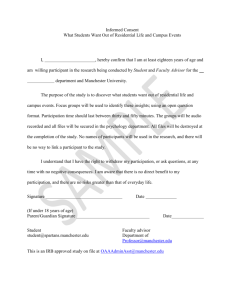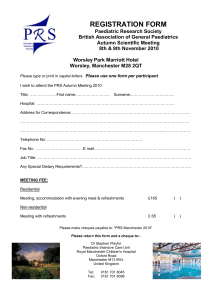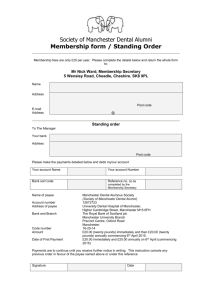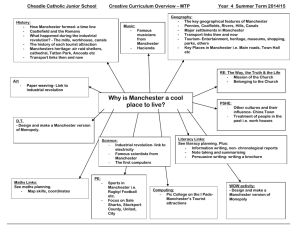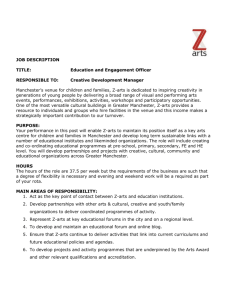DeguangYu
advertisement
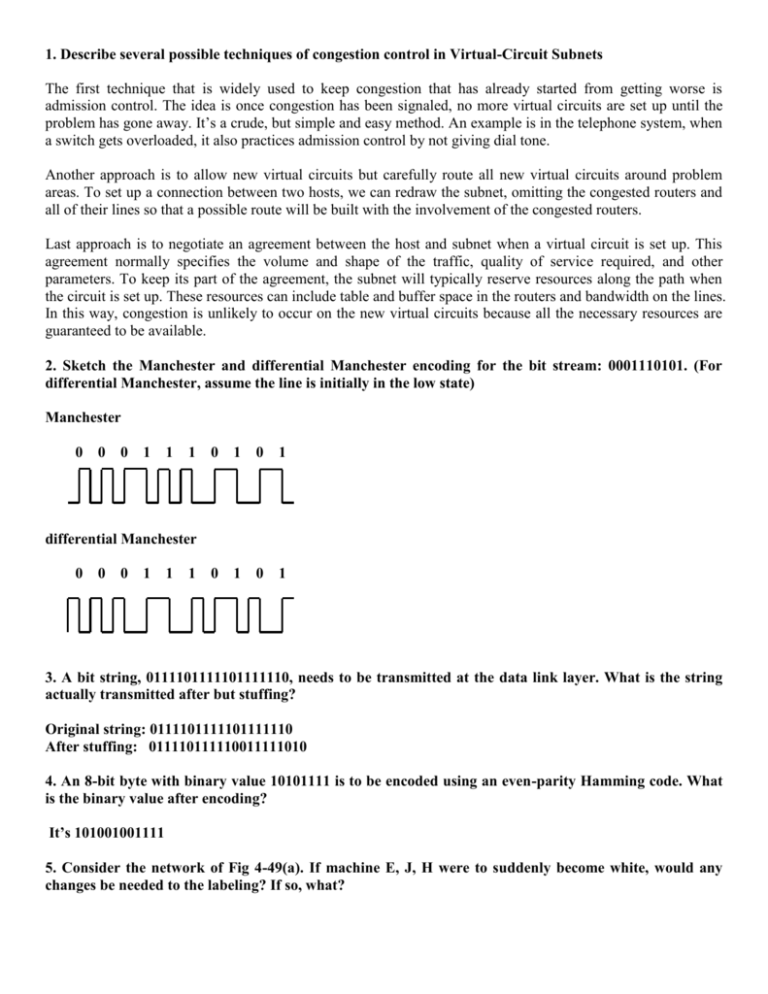
1. Describe several possible techniques of congestion control in Virtual-Circuit Subnets The first technique that is widely used to keep congestion that has already started from getting worse is admission control. The idea is once congestion has been signaled, no more virtual circuits are set up until the problem has gone away. It’s a crude, but simple and easy method. An example is in the telephone system, when a switch gets overloaded, it also practices admission control by not giving dial tone. Another approach is to allow new virtual circuits but carefully route all new virtual circuits around problem areas. To set up a connection between two hosts, we can redraw the subnet, omitting the congested routers and all of their lines so that a possible route will be built with the involvement of the congested routers. Last approach is to negotiate an agreement between the host and subnet when a virtual circuit is set up. This agreement normally specifies the volume and shape of the traffic, quality of service required, and other parameters. To keep its part of the agreement, the subnet will typically reserve resources along the path when the circuit is set up. These resources can include table and buffer space in the routers and bandwidth on the lines. In this way, congestion is unlikely to occur on the new virtual circuits because all the necessary resources are guaranteed to be available. 2. Sketch the Manchester and differential Manchester encoding for the bit stream: 0001110101. (For differential Manchester, assume the line is initially in the low state) Manchester 0 0 0 1 1 1 0 1 0 1 0 1 0 1 differential Manchester 0 0 0 1 1 1 3. A bit string, 0111101111101111110, needs to be transmitted at the data link layer. What is the string actually transmitted after but stuffing? Original string: 0111101111101111110 After stuffing: 011110111110011111010 4. An 8-bit byte with binary value 10101111 is to be encoded using an even-parity Hamming code. What is the binary value after encoding? It’s 101001001111 5. Consider the network of Fig 4-49(a). If machine E, J, H were to suddenly become white, would any changes be needed to the labeling? If so, what? Fig 4-49(a) After J became white The table inside B2 has to be updated to relabel the port to LAN 2 as W instead of GW since on LAN 2, there is no grey host any more. Also, table inside B1 has to be updated to relabel the port to router B2 as W instead of GW since there’s no grey host on that port.
